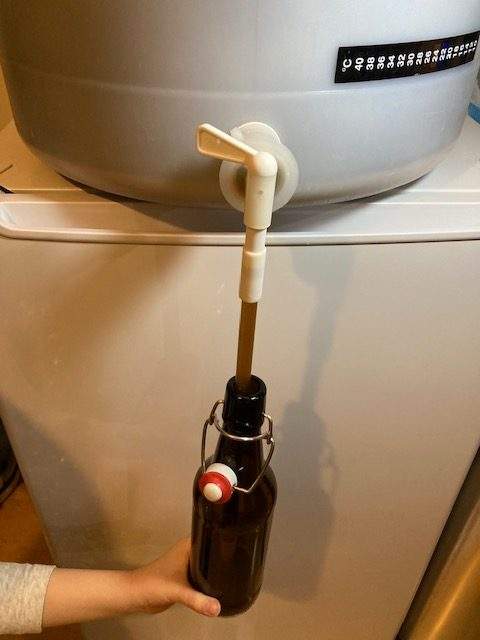Carbonating Beer Bottles
The Priming Sugar Calculator is a tool to achieve correct carbonation levels in beer bottles. Priming sugar is the sugar used to create the carbonation. Simply put, the live yeast in the beer eat the priming sugar and produce a little more alcohol and enough CO2 to carbonate the beer. Make sure that the yeast are finished with fermentation before priming and avoid over priming as either may lead to exploding bottles.

Also, please be aware that the input for the Temperature Of Beer To Be Bottled is used to compute the amount of residual CO2 left in the beer after fermentation finished. If the beer has been at a stable temperature post-fermentation, you should be fine using the current temperature. If the beer has not been at a stable temperature post-fermentation, use a number between the minimum and maximum temperature the beer has experience post-fermentation. This will also be dependent upon the time length of time spent at a temperature.
Beer carbonation is measured in Volumes of CO2. A Volume of CO2 would equate to the CO2 from the beer being removed and its volume at Standard Temperature and Pressure divided by the beer’s volume. Volumes of CO2 can vary from just upward of 1 on the low-end for a cask carbonated British Ale to around 4 on the high-end for German Wheat Beer or some Belgian styles of beer. There are guidelines out there for what volumes of CO2 are appropriate for each beer style, but nothing is stopping you from going outside these guidelines to meet your personal preference.
2.4 Volumes of CO2 are a good starting point if you are unsure as to what number to use in this calculator. There’s also typical carbonation level by beer styles in the information on the Forced Carbonation Calculator if you want more detail.
Priming Sugar Calculator Assumptions
The assumption for the amount of priming sugar is that it is Table Sugar (aka Sucrose) or Corn Sugar (aka Dextrose or Glucose). Both of these are considered to be very close to 100% fermentable. If another priming sugar is used such as Honey or Malt Extract, then a greater amount will be needed. This amount is based-upon the percentage of which is fermentable, which is often not know. For example, different types of Honey from different suppliers may have varying water content; therefore the fraction which is fermentable will be different.
